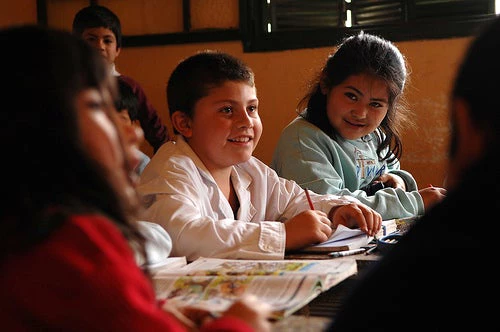In education, perhaps even more than in other social sectors, not every parent is looking for the same standardized service. All parents want their children to learn and benefit from a great education.
But for some parents, other dimensions matter as well. In many developing countries faith and values are important for families and local communities. It is therefore not surprising that the number of faith-inspired schools appears to be growing, with various types of schools within a tradition providing different services (for example, madrasas usually focus on religious education while Franco-Arab schools also teach secular topics).
Private secular schools are also growing, albeit for different reasons related more directly to the perceived quality of the education they provide. Both types of private schools can usefully complement public schools and provide choice to families. And yet, relatively little systematic evidence is available on the market share, reach to the poor, cost for families, and quality of both types of schools.
Two recent World Bank studies help bridge that gap in knowledge. The first study provides a comparative assessment of the role of public, private secular, and faith-inspired schools in sub-Saharan Africa. It is based on a systematic analysis of nationally representative household surveys for 16 countries that identify separately public, private secular, and faith-inspired schools, as well as in-depth qualitative data collection in two countries (Ghana and Burkina Faso).
The second study focuses on the experience of the Jesuit-run Fe y Alegría network of schools in Latin America. That study combines articles that assess (quantitatively) the performance of the network’s schools with other articles looking at the schools’ pedagogical practices.
The first study on sub-Saharan Africa suggests that the market share of faith-inspired and private secular schools is smaller than often claimed, but still substantial. Across the 16 countries, the average market share for faith-inspired schools is at 14% at the primary level and 11% at the secondary level. The corresponding market shares for private secular schools are 12% and 16%. These estimates from household surveys are of an order of magnitude similar to the statistics on the market share of the private sector as a whole, reported by the UNESCO Institute of Statistics on the basis of administrative data provided by government.
The household surveys also suggest that public schools reach the poor more than faith-inspired schools, while private secular schools are the least ‘pro-poor’. This is not surprising given that the cost for households of private secular schools is higher than that of faith-inspired schools, with public schools being the most affordable. The fact that faith-inspired schools do not reach the poor in priority, statistically speaking, does not mean that they do not aim to do so. But they operate within tight budget constraints, especially when support from governments is limited, and this requires some level of cost recovery from households. Some private secular schools also aim to reach the poor, but this tends to not to be a widely shared feature of these schools.
Finally, and most importantly, the data suggest that both faith-inspired and private secular schools have higher satisfaction rates among parents than public schools, with private secular schools performing best according to that metrics.
Tentative evidence also suggests that student performance in terms of literacy and numeracy, as well as test scores, is also often (but not always) higher among faith-inspired and private secular schools than in public schools. In the case of faith-inspired schools, qualitative evidence suggests that the emphasis placed on religion for Islamic schools and values more than religion per se in Christian schools is appreciated by parents. In other words, these schools are highly valued and could probably be better supported by governments and donors provided that they also teach secular topics, which is often the case.
Why is the quality of education provided apparently higher in faith-inspired and private schools than in public schools?
Part of the explanation could come from teacher motivation. For example, teachers in faith-inspired schools might be “working for God” (to use the title of an article on faith-inspired health care by Reinikka and Svensson). If only motivation were at play, the ability to scale up those schools, or replicate their success in other schools might be limited, as reservoirs of highly motivated teachers are probably finite.
But while motivation plays a role, the management and teacher training systems that well performing faith-inspired and private secular schools have managed to put in place also matter greatly. This is clearly apparent in the second study on Fe y Alegría schools in Latin America. The management teams of the schools spend significant time and have succeeded in fostering a culture of accountability and dedication in the school that helps to place service to students at the very core of the teacher’s mission.
Overall, the message from both studies is that while it is not necessarily easy, fostering a culture of great service to students can be achieved, and the experience of faith-inspired and private secular schools is useful to better understand how it can be done.
The message is not necessarily to scale up provision of education by faith-inspired and private secular schools, but rather and more importantly to support existing schools that provide a great education to children. This is especially important when schools also aim to reach the poor. We should learn from their successes and see how they might be replicated in other types of schools.
Follow the World Bank education team on Twitter: @WBG_Education
Related
Education in sub-Saharan Africa: Comparing Faith-inspired, Private Secular, and Public Schools, World Bank Study, Washington, DC, 2014.
https://openknowledge.worldbank.org/handle/10986/16391
Faith-Based Schools in Latin America: Case Studies on Fe y Alegría, World Bank Study, Washington, DC, 2014
https://openknowledge.worldbank.org/handle/10986/16375



Join the Conversation